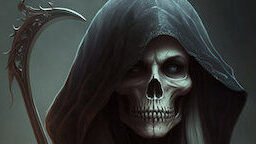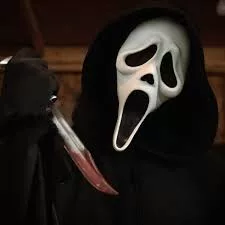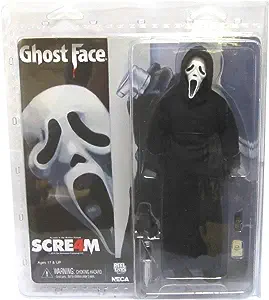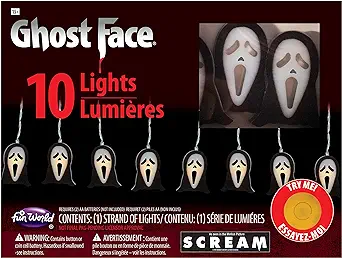In the realm of horror cinema, certain franchises attain an iconic status that transcends time and genre boundaries. The ‘Scream’ franchise is undeniably one such example. Since its inception in 1996, the series has masterfully blended elements of horror and satire, carving a niche for itself that has left an indelible mark on the genre.
With its meta-commentary on horror tropes and relentless suspense, the ‘Scream’ franchise has become a cultural touchstone, redefining the rules of horror while keeping audiences on the edge of their seats.
A new breed of horror
Directed by Wes Craven and penned by Kevin Williamson, the original ‘Scream’ film shattered conventions by self-awarely referencing the very horror clichés it played upon. By blending humor and horror, the movie breathed new life into the genre, attracting both seasoned horror fans and newcomers alike.
The film’s memorable opening sequence, featuring Drew Barrymore’s character tormented by a mysterious caller, immediately set the tone for a rollercoaster of tension, unpredictability, and spine-chilling scares.
Meta-Horror: A recipe for success
What truly sets the ‘Scream’ franchise apart is its ability to subvert expectations and toy with audience perceptions. The series artfully employs the meta-horror concept, where characters within the movie are well-versed in horror movie tropes.
This allows for a level of self-reference and irony that adds depth to the scares. The characters’ knowledge of horror conventions doesn’t grant them immunity to the terrors they face, creating a sense of vulnerability that resonates with audiences.
Ghostface
Any discussion about the ‘Scream’ franchise would be incomplete without mentioning its iconic antagonist, Ghostface. Donning a mask reminiscent of Edvard Munch’s “The Scream,” the killer’s identity changes with each installment, keeping viewers perpetually guessing.
This shifting dynamic magnifies the suspense, as anyone – from friends to family – could potentially be the next masked menace. Ghostface, with their unnerving voice and sadistic penchant for phone calls, became an embodiment of primal fear, even in the digital age.
Cultural impact
Beyond its cinematic accomplishments, the ‘Scream’ franchise has permeated popular culture in numerous ways. The mask and robe have become instantly recognizable symbols, synonymous with terror. The series’ signature question – “What’s your favorite scary movie?” – is etched into the memories of countless horror aficionados. Moreover, the franchise’s satirical examination of society’s fascination with violence and horror has only become more relevant with time.
Evolution and legacy
The franchise has gone through several sequels, each evolving to incorporate contemporary horror trends while remaining true to its roots.
Scream (1996) Plot: A small town is terrorized by a masked killer known as Ghostface, who targets high school students. As the body count rises, a group of friends led by Sidney Prescott becomes entangled in a web of secrets and suspicion, all while adhering to the rules of horror movies to survive.
Key Characters:
- Sidney Prescott (Neve Campbell)
- Gale Weathers (Courteney Cox)
- Dewey Riley (David Arquette)
- Tatum Riley (Rose McGowan)
Scream 2 (1997) Plot: Two years after the first murders, a new series of killings begins at the premiere of a film based on the events of the original ‘Scream.’ Sidney, now in college, becomes the target once again, forcing her to confront her traumatic past and the new danger that has arisen.
Key Characters:
- Randy Meeks (Jamie Kennedy)
- Derek Feldman (Jerry O’Connell)
- Mickey Altieri (Timothy Olyphant)
- Cici Cooper (Sarah Michelle Gellar)
Scream 3 (2000)
Plot: A new wave of killings takes place during the production of “Stab 3,” the latest movie inspired by the Ghostface murders. Sidney, now in hiding, is drawn back into the chaos as she attempts to unravel the mystery behind the killings and uncover the truth about her mother’s past.
Key Characters:
- Roman Bridger (Scott Foley)
- Jennifer Jolie (Parker Posey)
- Mark Kincaid (Patrick Dempsey)
- Detective Kincaid (Lance Henriksen)
Scream 4 (2011)
Plot: Sidney Prescott returns to her hometown on the anniversary of the original killings, only to find that a new Ghostface is on the loose. This time, the killer targets a new generation of teenagers, and Sidney, along with her cousin Jill and a group of friends, must once again outwit the relentless murderer.
Key Characters:
- Jill Roberts (Emma Roberts)
- Kirby Reed (Hayden Panettiere)
- Charlie Walker (Rory Culkin)
- Deputy Judy Hicks (Marley Shelton)
Scream (2022)
Plot: Set in the same continuity as the previous films, a new series of murders rocks the town of Woodsboro, coinciding with the release of a new ‘Stab’ movie. Sidney Prescott returns to face the Ghostface killer once more, joined by a new generation of characters, as they grapple with the legacy of past horrors and the threat of a resurfaced evil.
Key Characters:
- Sidney Prescott (Neve Campbell)
- Gale Weathers (Courteney Cox)
- Dewey Riley (David Arquette)
- Tara Carpenter (Jenna Ortega)
Box office
Scream (1996): Approximately $173 million
Scream 2 (1997): Approximately $172 million
Scream 3 (2000): Approximately $161 million
Scream 4 (2011): Approximately $97 million
Conclusion
The ‘Scream’ franchise remains a testament to the power of innovation within the horror genre. By ingeniously blending satire, suspense, and self-reference, it has continuously redefined the boundaries of horror cinema. From its groundbreaking debut in 1996 to its latest iterations, the franchise has expertly walked the line between terror and commentary.
As long as there are fans who yearn for the thrill of the unknown, the masked visage of Ghostface will forever haunt our screens, keeping the legacy of ‘Scream’ alive.



